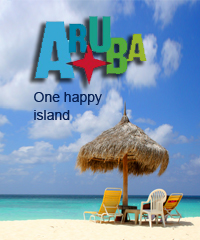A mixture from all walks of life
With a population of over 100,000 inhabitants Aruba is made up of a culturally diverse mixture of well-educated people with a friendly nature and a zest for hospitality. Today’s Arubans are generally of mixed ancestry of Caquetio Indian, African and European roots. The island is a happy melting pot.
Over the years, a great number of people from all over the world have found their way to Aruba. Immigrants hail from South America (primarily Colombia, Venezuela and Peru), other Caribbean islands, and as far away as China, the Philippines, and seventeen African nations.
The island’s rich, multicultural past is reflected in its cuisine, architecture and warm, friendly people. As you visit the island you will be surprised by the richness of its history and nature.
Spanish & Dutch Rule
When explorer Alonso de Ojeda discovered Aruba in 1499 and claimed it for the Spanish throne, he named it isla de los gigantes (English: island of giants) due to the tall Indians descendants from Aruba’s very first settlers. After a decade, Aruba’s moniker was changed to isla inútíl, useless island, as no gold or treasures were found.
Aruba’s strategic location was recognized by the Dutch who initially occupied the island in 1636 to protect their salt supply from the mainland and establish a naval base in the Caribbean during their 80-year war with Spain. Aruba remained in Dutch hands, except for a brief hiatus under English rule from 1805-1816, during the Napoleonic Wars.
What began as a fishing outpost for Amerindians has changed hands between the Spanish and Dutch throughout the centuries, and is now a diverse constituent country of the Netherlands.














